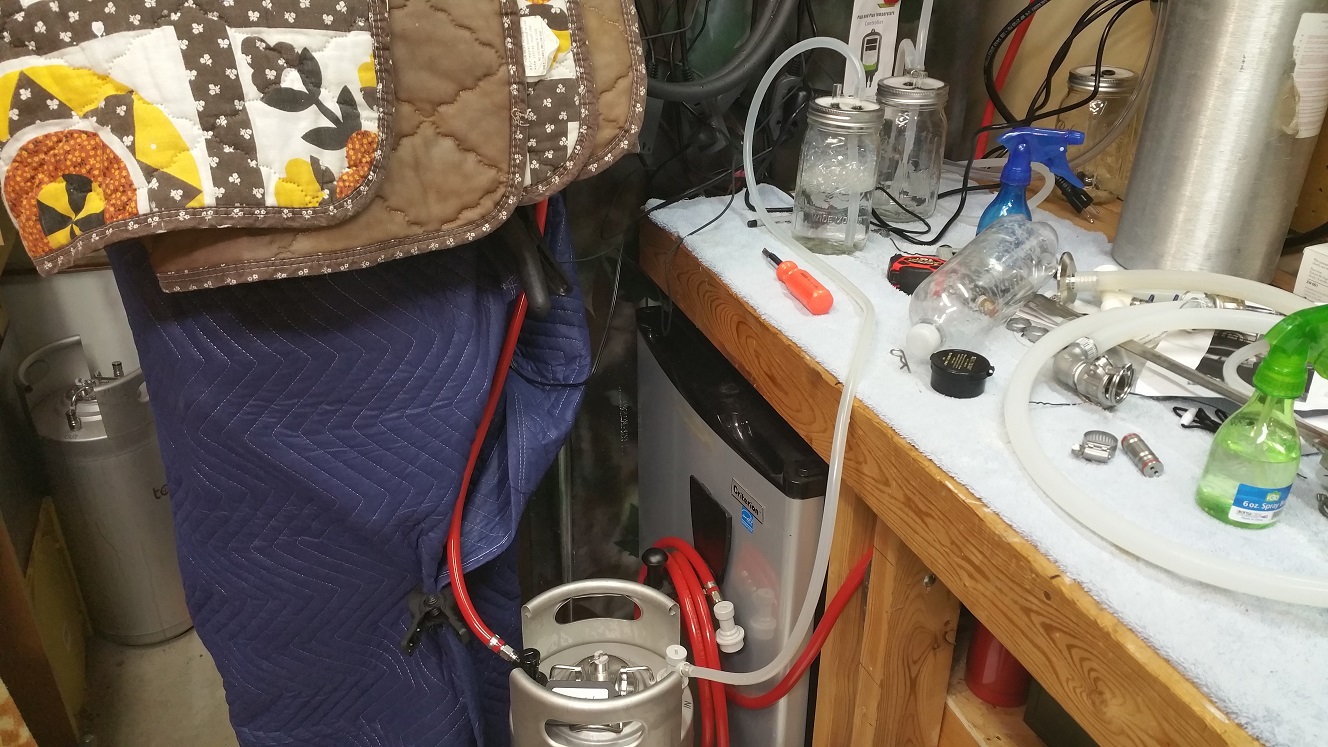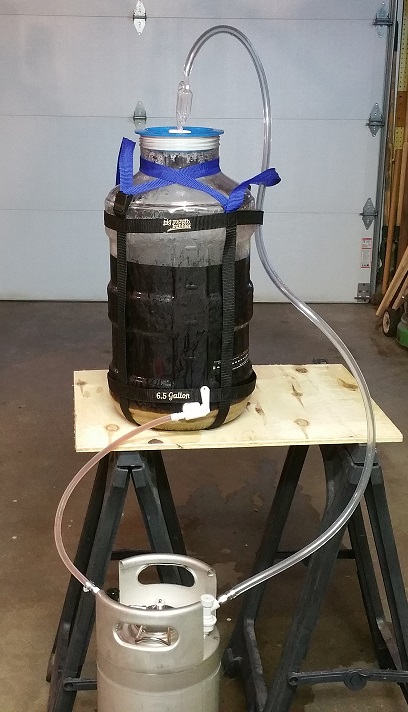Once the keg is clean, I'll dump in a pint or so of Star-san. I'll reseat the lid and swish around, inverting the keg, making sure all the surfaces are exposed to it. Then I'll open the lid and invert the keg and dump out the star-san.
I don't use a standard airlock on my fermenter--I use a stopper with a tube stuck in it--a bottle filling wand is perfect for that, just cut off about 3". From that I use some 5/16" silicone tubing, but any vinyl that fit would work as well. Usually I'd feed that into a jar w/ star-san, but now what I do is attach that 5/15" tubing to a black Liquid QD, and connect it to a keg. Release the PRV to allow the keg to vent, and all the gas produced in fermentation is purging the keg. There is enough CO2 produced to virtually clear the keg of air and oxygen. When fermentation ceases, I disconnect the tube from the keg, the undo the PRV so it seals again. Voila! Keg full of CO2, no bottled CO2 used to do it, and the CO2 is actually more pure than what comes from the bottle.
I just got a new conical, brewed with it Thursday for the first time. Here's how I captured the gases from the fermenter to feed the keg:
View attachment 566305
It's a little weird, but it works. Rather than an airlock--which I could use with a different configuration--I have a gas ball-lock on the gas manifold on the top of the conical. That is connected to a rather odd line--one end has the gas QD, the other has a black Liquid QD. I could connect that end directly to the keg, but in this case I connected it to the jumper line I used to rack the beer to the keg. I used one of these to connect the two black QDs together:
View attachment 566306
You can get these from brew hardware here:
https://www.brewhardware.com/product_p/ball_lock_jumperpost.htm
FWIW: I also use these to daisy chain faucets when cleaning my keezer lines. This is a bit of thread drift but it's probably worth noting:
View attachment 566308







































![Craft A Brew - Safale S-04 Dry Yeast - Fermentis - English Ale Dry Yeast - For English and American Ales and Hard Apple Ciders - Ingredients for Home Brewing - Beer Making Supplies - [1 Pack]](https://m.media-amazon.com/images/I/41fVGNh6JfL._SL500_.jpg)
























